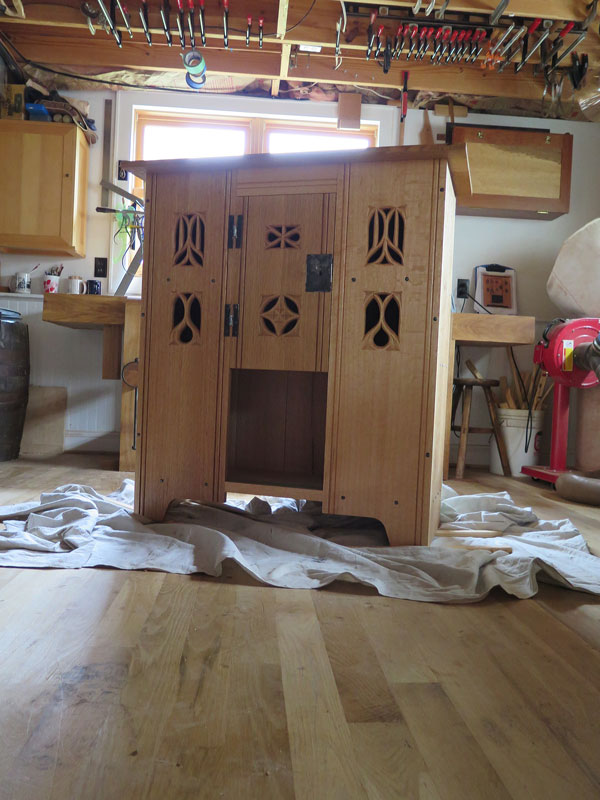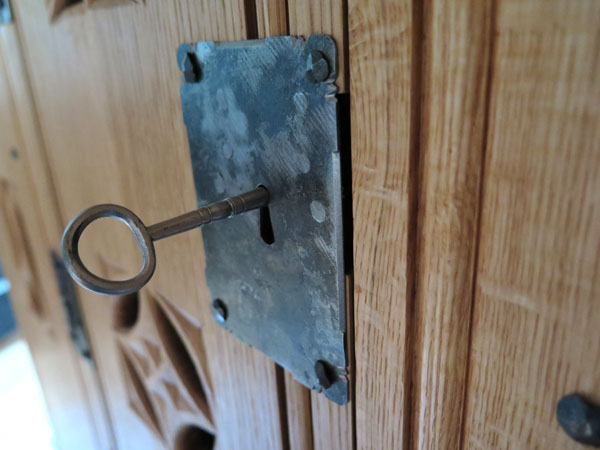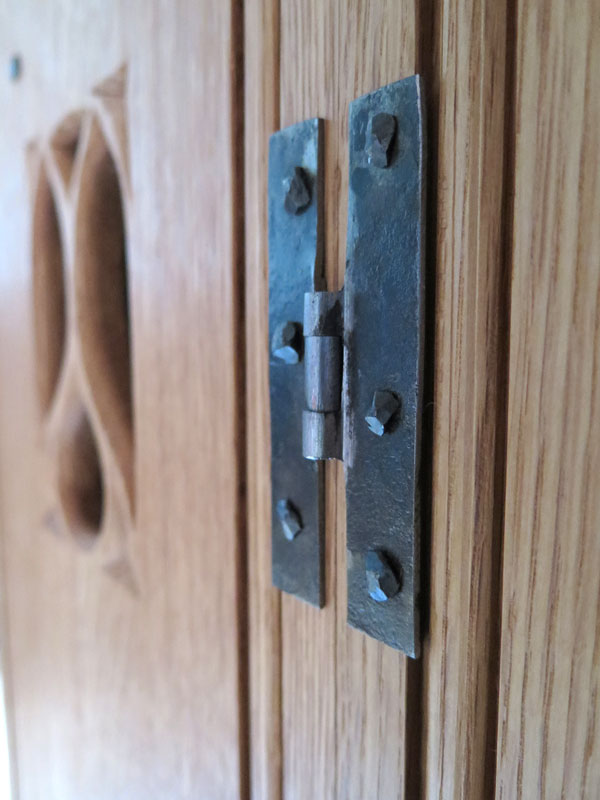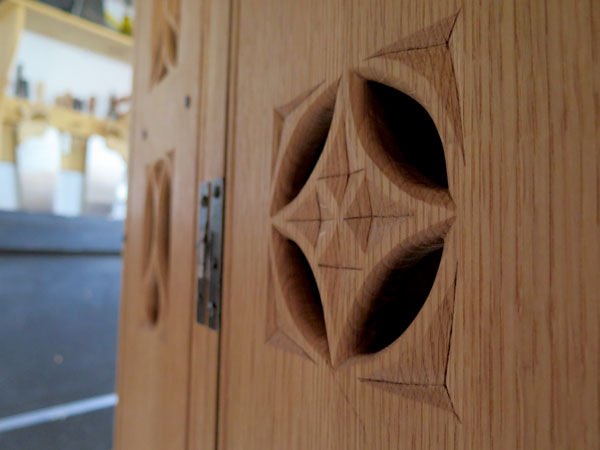We may receive a commission when you use our affiliate links. However, this does not impact our recommendations.
Last night I put the first coat of linseed oil on this oak aumbry I’m building for an upcoming issue of Popular Woodworking Magazine and think it came out like I wanted.
The oak is nothing special – just rift and quartered red and white oak off the rack at the lumberyard. I chose it mostly for its straight grain and color. Most of the construction is dados, rabbets and nails (with a couple of mortise-and-tenon joints thrown in for good flavor). All the joinery is reinforced with traditional nails – blacksmith-made wrought nails where the heads show, and cut nails where they are hidden.
The hardware – especially the lock and hinges – is special. Blacksmith Peter Ross made the hardware and the nails. If you’ve never worked with a smith before, it is worth searching one out. You get exactly what you want.
The hinges and lock are both installed with clinch nails. So installation is a bit stressful because you only get one shot to do it right.
The pierced Gothic tracery is my favorite part of the project. This project was a chance for me to get back to the basic geometric carving that I enjoy – a la Nicolai Fechin. The tracery is ridiculously easy: drill out the waste, shape the openings with a rasp. Shape the barrs with a straight chisel, then blend things with a fine rasp.
I’ll be covering this aspect of the project in detail in the forthcoming article.
I still have things to do – more coats of boiled linseed oil and beeswax. Then I have to scare up some fabric to attach to the inside of the piercings. I’m trying to figure out what kind of fabric would have been used there and haven’t had much luck finding good information. Megan Fitzpatrick, who is a better student of these early English things, suspects it would have been flax or linen.
If you aren’t familiar with aumbries, they are an early form of furniture that evolved into armoires, bookcases, cupboards and kitchen cabinets. Though most people associate the form with church furniture (for storing the sacrament), most sources say that aumbries were also used commonly in the home.
I’ve already had a customer approach me about buying it, but when my wife saw it last night she asked, “Can we please keep this one?” So I might be building another one soon.
— Christopher Schwarz
Here are some supplies and tools we find essential in our everyday work around the shop. We may receive a commission from sales referred by our links; however, we have carefully selected these products for their usefulness and quality.














I love the piece; it is so different from Shaker or arts and crafts pieces. and yet it shares so much with those later evolutions. I am curious how you chose the particular gothic designs for the faces, though. Gothic carvings generally have symbolic significances. If you’re at liberty to say, what’s your source?
Hoss! Where do you get the time to do all this stuff? You must work 20 Hour days. Magnificent!!
Don’t burn out, we need your inspiration.
Jerry
Linen is made from flax.
An aumbry is usualy a storage place in the sanctuary of a Christian church in which consecrated bread and wine is stored. Even sixty years ago cabinets similar to that you have built were still being used to store cheese, butter and meat. They kept the flies off and were called food safes. The covering was always plain white cotton muslin. I know because my familly used one when I was a child.
Does your use of the word reflect a different meaning in the USA?
“Can we please keep this one?” You wont ever get a better compliment that that!
Thanks for sharing with us.
Hey Chris,
Cool project! I suspect that the fabric would have been flax linen, dyed with tanbark as protection against rot.
Cheers,
Tom